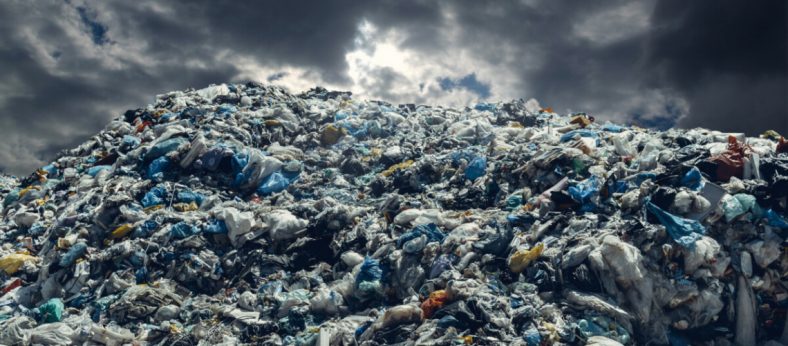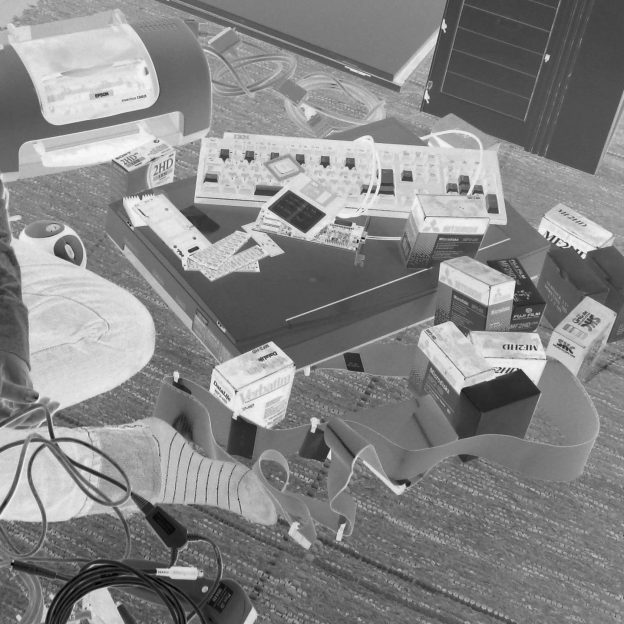The ever-increasing amount of electronic waste is a major global problem. Based on international studies, it has been calculated that a total of about 5,000 tonnes of electronic waste would leave Finland for developing countries each year, i.e almost a kilo per capita. The amount corresponds to less than five percent of the electronic waste generated annually in Finland. (1) The ‘recycling’ of e-waste in developing countries is much cheaper. The largest recipients of e-waste in Africa are Ghana and Nigeria, in Asia China, India and Pakistan. (2) It is estimated that more than half of the world’s electronic waste passes through official channels to developing countries, where only precious metals are collected from equipment, regardless of the health of workers. (3)
The interest of mining companies is based on the fact that recycling metals is cheaper than digging from the ground./(4)

It is not always so easy to separate used equipment from scrap. Many devices considered waste in Finland still get a new life in the hands of a West African repairman. Along with Nigeria, Ghana is Africa’s largest recipient of European used electronics. (1)
Ghana’s economy has grown rapidly, but living standards are still so low that there is a huge demand for used televisions and computers in homes, offices and internet cafes. Computers and other equipment are also repaired in small workshops.

Cows with open wounds graze on the site
The Agbogbloshie Scrap Yard is located a stone’s throw from the center of Accra, the capital of West African Ghana. There are several similar waste treatment sites on the outskirts of the city, but Agbogbloshie is Ghana’s largest and most researched – and has received the most negative publicity. “Sometimes we inhale toxic gases, and that filth accumulates in the body. But this work is the only way for us to survive, ”says scrap sorter Baba Adi. No one seems to have a respiratory protection. In Agbogbloshie and similar waste treatment areas, Finnish equipment will almost certainly also be disposed of. This is despite the fact that the export of electronic waste from Finland to developing countries is prohibited. Many working in the area are poor people who have moved from northern Ghana to the capital.

Adjoa, nine, sells small water bags to the workers. They drink it and use it to extinguish fires
They are attracted there by big earners. Sorters like Baba Ad can earn between € 150 and € 250 a month, about four times the Ghanaian minimum wage. The electronics waste business in Ghana generates an estimated € 200 million a year and directly or indirectly supports 200,000 people.
Cough and chest pain are common problems in Agbogbloshie. High levels of heavy metals such as lead and iron have been found in workers ’blood and urine samples. They end up in the body from air, water and food purchased from the waste area.

Kwabena Labobe, 10, plays on the site. His parents are not able to send him to school and forbid him to burn e-waste
Heavy metals are especially dangerous for toddlers living in the surrounding slums, who play in the scrap yard. Heavy metals end up in babies through breast milk. High levels of heavy metals have been linked in studies to nervous system damage in children and fetuses. There is no use for worthless parts of electronic waste. They are being dumped in informal landfills in Ghana. (1)
In Finland, the value minerals of equipment are collected mainly in industrial plants. Shipping goods to China is cheaper than a truck ride from Jyväskylä to Helsinki. According to one study, it is 13 times cheaper to separate gold, aluminum and other precious metals from electronic waste in China than to dig minerals underground. (1)
Most of the environmental impact of a smartphone, for example, comes from production. Digging metals and making components, or mobile phone parts, requires a lot of energy. (4) Even if you think of a basic cell phone or laptop, they may contain about 30 different metals. These metals come from all over the world. After the metals have been excavated, they go to a smelter or refinery, they may be made into various chemicals, then they go to a component plant and from there to an assembly plant where the equipment is assembled. There may be a real number of factories and operators before the metal ends up in the finished device and from there to the consumer. This is perhaps the main reason why it is really difficult to know where all the particles come from and under what conditions they are made.There can be dozens, hundreds or, for example, Samsung has 2,500 suppliers. (5)
According to a new study, if Europeans used their mobile phones a year longer than now, it would save two million tonnes of emissions, or about a million cars emissions, a year. The average lifespan of mobile phones in Europe is three years.
In the United States, 400 million electronic devices are rejected each year, an estimated 2/3 of which are operational. (5)

Europe generated 15.6 kilograms of electronic waste per capita. In Africa, the corresponding figure was only 1.7 pounds per capita. (6) And yet, more Africans have access to mobile phones than to clean drinking water. (7)
A total of 50 million tonnes of electronic waste is generated worldwide each year, of which only 20% is recycled. (5)
References:
(1) //https://yle.fi/uutiset/3-10472211
(2) /https://www.kansanuutiset.fi/artikkeli/3093042-eurooppalaisen-elektroniikkajatteen-paatepysakki-on-ghanassa
(3) / https://www.kuusakoski.com/fi/finland/yritys/yritys/uutiset/2019/elektroniikkaromu-vaarissa-kasissa-on-tietoturvariski/
(4) https://www.fingo.fi/ajankohtaista/uutiset/suomi-vie-elektroniikkajatetta-kehitysmaihin
(5) / https://yle.fi/uutiset/3-11141662
(6) YK:n yliopiston (UNU) raportti [vuodelta 2016] / https://yle.fi/uutiset/3-9296700
(7) THEORY BEYOND THE CODES Dust and Exhaustion The Labor of Media Materialism Jussi Parikka
Photos:
- https://news.itu.int/ewaste-growing-challenge/
- https://www.theguardian.com/environment/gallery/2014/feb/27/agbogbloshie-worlds-largest-e-waste-dump-in-pictures / Cows with open wounds graze on the site
- https://www.theguardian.com/environment/gallery/2014/feb/27/agbogbloshie-worlds-largest-e-waste-dump-in-pictures /Adjoa, nine, sells small water bags to the workers. They drink it and use it to extinguish fires.
- https://www.theguardian.com/environment/gallery/2014/feb/27/agbogbloshie-worlds-largest-e-waste-dump-in-pictures / Kwabena Labobe, 10, plays on the site. His parents are not able to send him to school and forbid him to burn e-waste
- https://venturebeat.com/2017/06/13/5-billion-people-now-have-a-mobile-phone-connection-according-to-gsma-data/ Image Credit: Maxx-Studio





